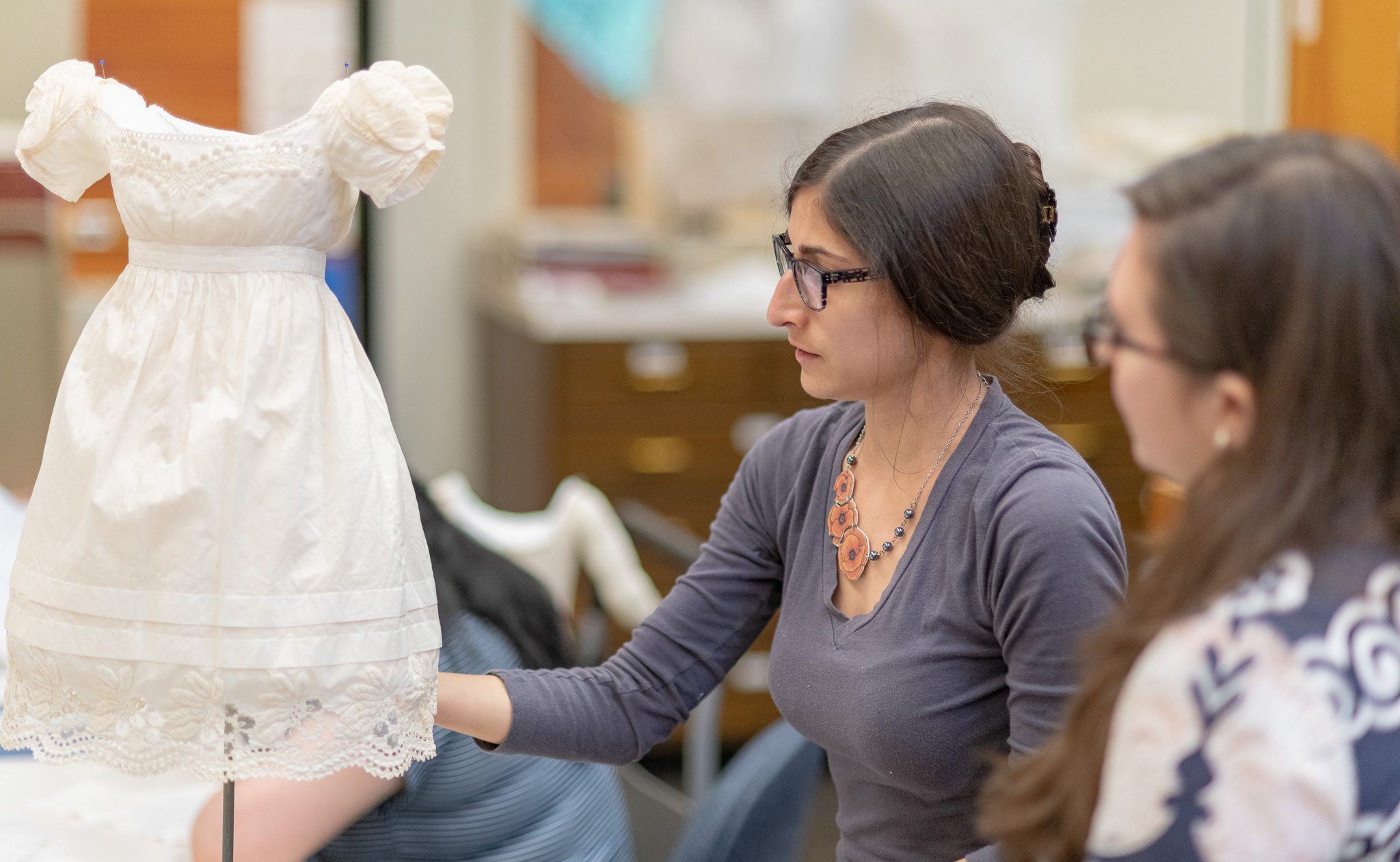
Textile conservators at Winterthur are responsible for about 20,000 objects such as window treatments, bed curtains, rugs, costumes, quilts and coverlets, needlework, and upholstery. Damage to textiles comes from many sources. Unstable environmental conditions that cause mold and exposure to excessive light weaken and discolor textile fibers and fade dyes and colorants. Abrasive, acidic soil from the environment that becomes embedded in the fibers also weakens and disfigures the textile. Stains and wear from past usage contribute to deterioration. Some dyes and finishes used in the production of textiles are inherently unstable and may case serious damage. Textile conservators support and stabilize the structure of textiles while reducing stains and degradation wherever possible.
Preventive Conservation
Winterthur’s textiles are stored in stable environmental conditions using acid-free archival quality tissues, boxes, and fabrics. To prevent creases that cause localized damage to the fibers, textiles are rolled or padded with acid-free tissue. Textiles on open exhibit are cleaned regularly by careful low-suction vacuuming to remove dust. Lighting specialists are especially vigilant in lighting textiles and keep the levels very low. If a textile becomes too weak to remain on exhibit, it is retired to the study collection and replaced with a textile in better condition or a reproduction fabric. Textile conservators also work with furniture conservators to preserve existing upholstery fabrics or replace them with reproductions.